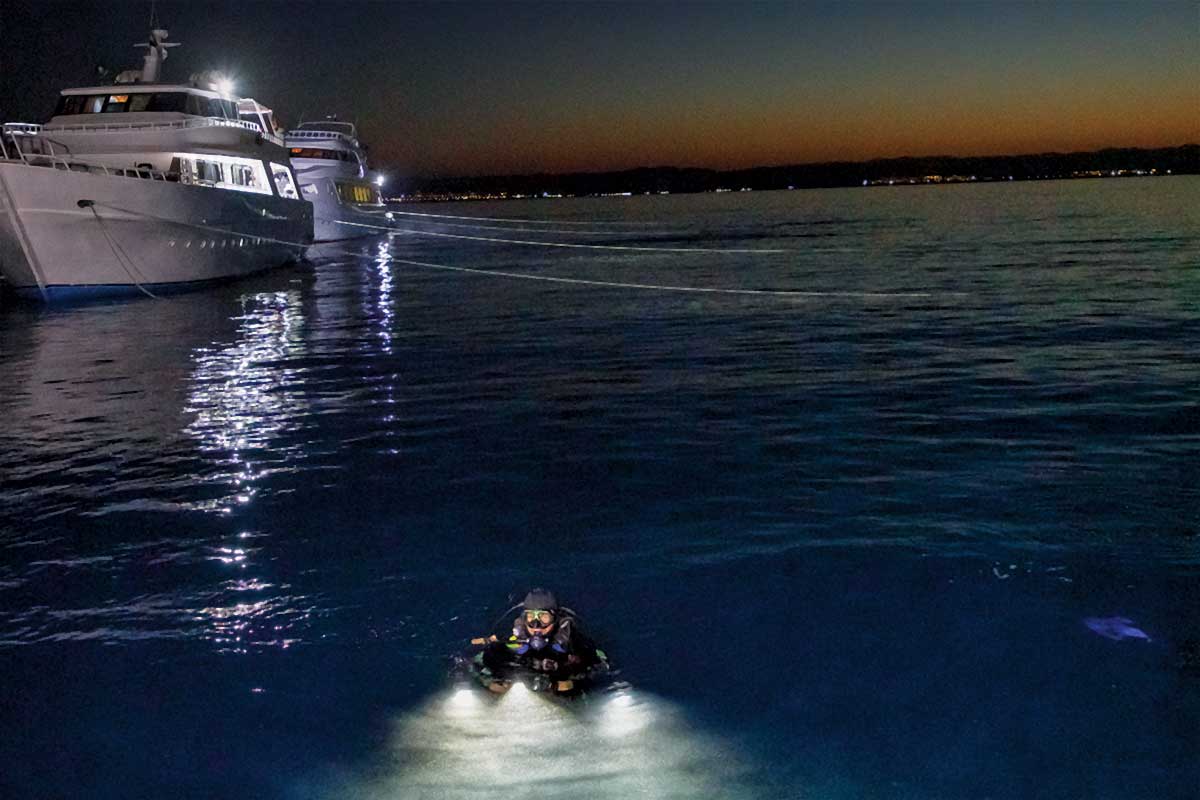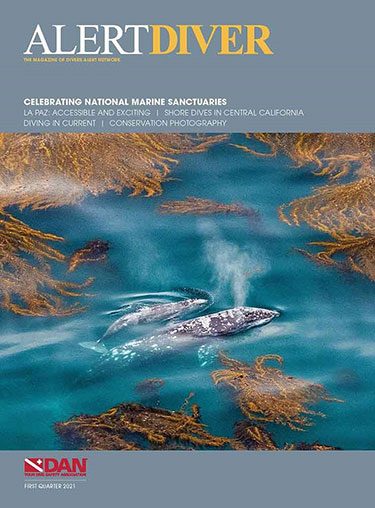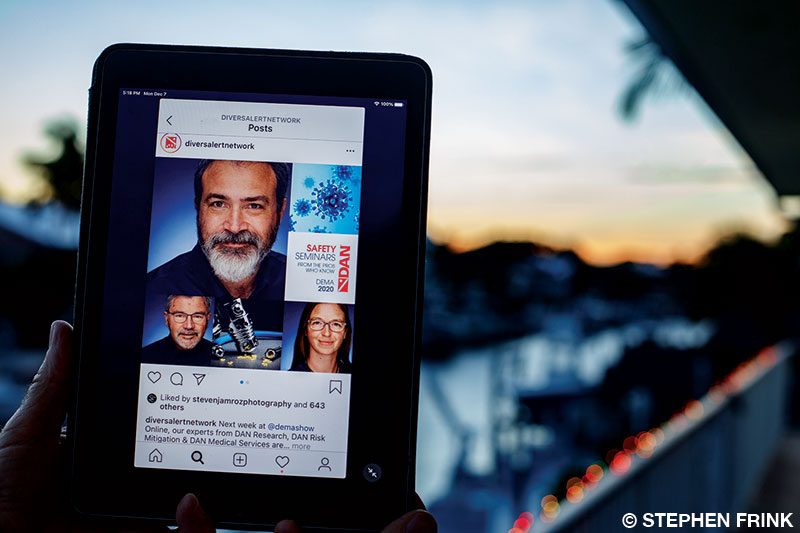With travel to become more available soon, DAN’s newly released travel insurance offerings enable you to stay in control of your adventure. Our new trip and annual programs are backed by DAN’s 40 years of experience and expertise and offer protections for a wide range of travel-related situations. You can purchase an annual plan to cover all your travel for a year or a trip plan to cover a single trip. The available options ensure there’s a plan that’s right for your needs.
The 2021 DAN Live webinar series will help promote a culture of safety and spark community connections online. Presented by DAN experts from our research, risk mitigation, medicine, training and insurance teams, the new DAN Live series will cover various topics, including fill station safety, ear barotrauma, DAN research updates, the latest information about COVID-19 and diving, and more. Sessions will occur on the third Thursday of each month.
In the six years Neha Mani has been diving, she has seen a notable difference in coral reef vitality as a result of climate change. Coral skeletons on the powdery sand of the seafloor haunt the living coral with their cautionary tale. Numerous factors contribute to coral bleaching, but we know it is an extension of our changing climate. The steps we take to protect the reefs have broader benefits beyond just the coral. Through our conscious efforts to protect our oceans, we can hopefully pave a path to environmental recovery.
View Andy and Allison Salmon’s bonus photo gallery that accompanies their feature on diving Central California.
With the COVID-19 pandemic curbing international travel, divers can still choose to dive locally. Andy and Allison Sallmon take us along on their road trip to Central California dive sites, where we can discover macro subjects in Morro Bay and bountiful marine life at the well-protected sites at Carmel and Monterey Bay.
After reading Tanya Burnett’s feature about La Paz, see more of her amazing images in this photo gallery.
La Paz, on Mexico’s Baja California Peninsula, has always been connected to the sea, from its indigenous pre-Columbian people and a history of sea explorers, pearl divers and fishers to a modern destination attracting ocean-inspired tourists to interact with the abundant marine treasures of this region.
The U.S. currently has 14 national marine sanctuaries and two marine national monuments, and each has its own unique story. In preserving these irreplaceable resources, the sanctuaries protect who we are at our base — our soul as a nation. They reaffirm us and connect us to our incredible heritage.
Underwater photographers usually evolve a specialty, but the first fork in their road typically involves defining an interest in either photographing natural history — marine life in particular — or concentrating on editorial and commercial work that inevitably involves photographing people underwater. Photos of charismatic marine life help tell the story of a dive destination or might be used for photo décor or stock photography. Compositions that illustrate people interacting with marine life bridge both disciplines and combine each approach’s rewards and challenges.
After reading the Shooter column “Cristina Mittermeier: Commitment to Conservation,” view this additional photo gallery of her work.



